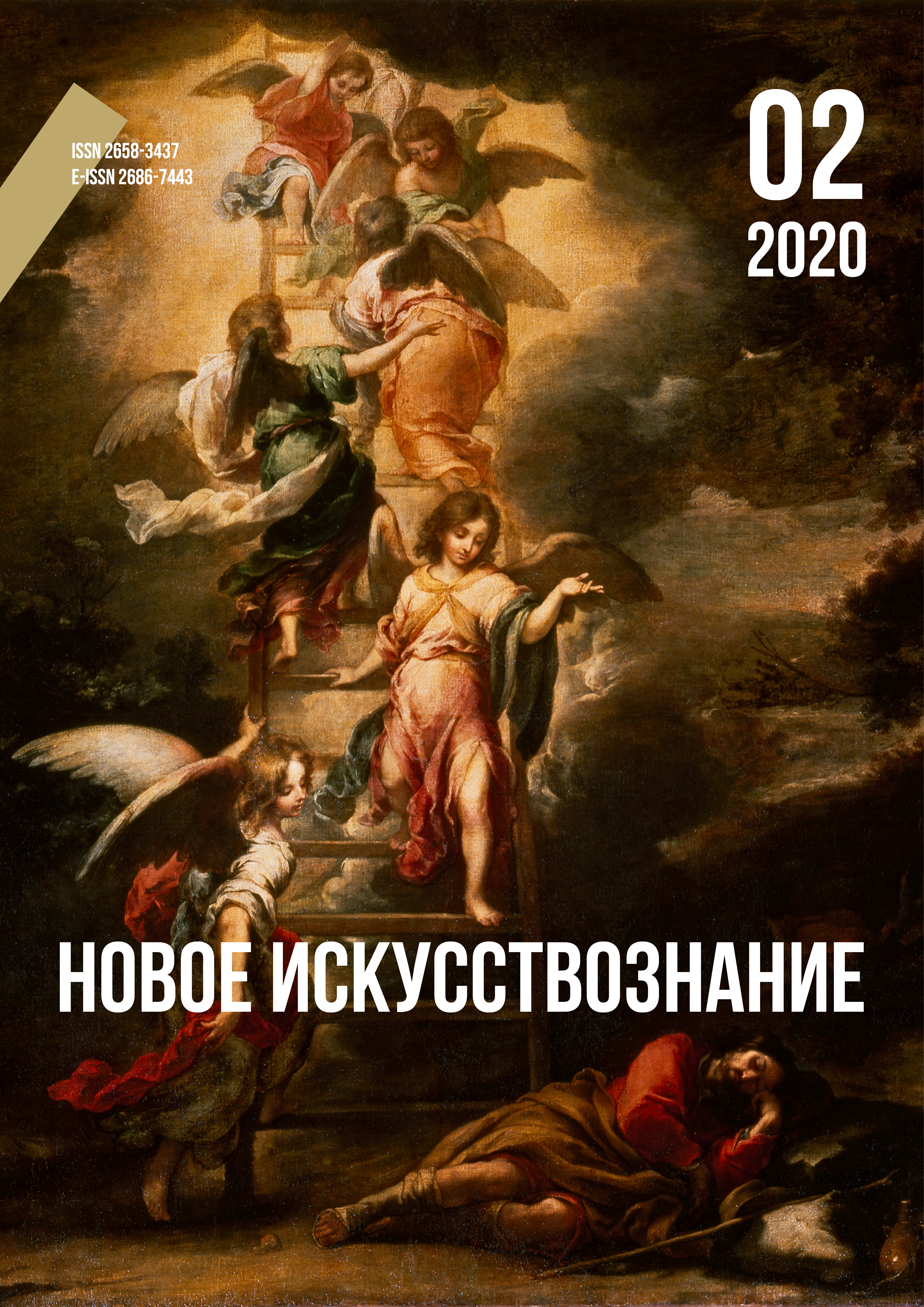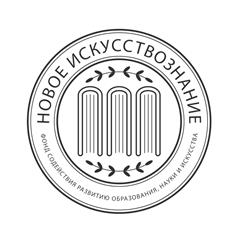«РАЙСКИЕ» ВОРОТА ПЕТРОПАВЛОВСКОЙ КРЕПОСТИ САНКТ-ПЕТЕРБУРГА
Аннотация
Рукопись «О зачатии и здании царствующего града Санкт-Петербурга», хранящаяся в Эрмитажном собрании Отдела рукописей Российской национальной библиотеки, свидетельствует, что во время церемонии закладки города — 16 мая 1703 г. — Петр I сам определил место для его ворот (между Государевым и Меншиковым раскатами) и прообразовал их аркой из связанных вершинами берез. Этот образ-символ — ключ к пониманию и первой (1707–1708), и второй (1716–1718) программ ворот, в которых при перемене скульптурного декора была сохранена, как смыслообразующая, композиция аттика «Спор апостолов Петра и Павла с Симоном-волхвом». Семиотический анализ программ ворот приводит к выводу о том, что ворота, традиционно называемые «Петровскими», по смыслу — врата «Райские»: поэтому на них и была помещена скульптура апостола Петра — привратника Царства Небесного. Предлагаемая статья подтверждает, насколько это возможно, «книжный» характер рукописи «О зачатии и здании царствующего града Санкт-Петербурга» и несомненную значимость ее свидетельств; истолковывает символическую программу Петровских ворот Петропавловской крепости в исторической перспективе.
Литература
Ageeva O. G. The Title “Emperor” and the Concept of “Empire” in Russia in the First Quarter of the 18th Century. Mir istorii (World of History), 1999. Available at: http://www.historia.ru/1999/05/ageyeva.htm (accessed: 23.04.2020). (in Russian)
Badalanova-Pokrovskaia F. K.; Pliuhanova M. B. Medieval Symbols of Power: The Cross of Constantine in the Bulgarian Tradition. Trudy po russkoi i slavjanskoi filologii (Works on Russian and Slavic Philology), 1958, issue 1, pp. 132–148. (in Russian)
Barankova G. S. Pieces of the Slavic-Greek-Latin Academy about the Great Northern War (About Some Artistic Features). The Institute of Russian Literature of the Russian Academy of Science. Available at: http://www.pushkinskijdom.ru/Portals/3/PDF/XVIII/09_tom_XVIII/Barankova/Barankova.pdf (accessed: 23.04.2020). (in Russian)
Barinova I. N. The Urban Development Phenomenon of Saint Petersburg: On the Issue of Celebrating Saint Petersburg City Day. Trudy Gosudarstvennogo Ermitazha (Works of the State Hermitage Museum), 2009, vol. 47, pp. 51–59. (in Russian)
Begunov Iu. K. Recently Founded Story in Early 18th Century. Available at: http://begunov.spb.ru/index.php?option=com_content&task=view&id=335 (accessed: 28.03.2020).
Bespiatykh Iu. N. Peterburg Petra I v inostrannyh opisaniiakh. Vvedenie. Teksty. Kommentarii (Petersburg of Peter the First in Foreign Descriptions. Introduction. Texts. Commentaries). Leningrad, Nauka Publ., 1991. 280 p. (in Russian)
Borodkina N. N. Petrovskaia epokha v tserkovnoi publicistike nachala 18 veka (The Epoch of Peter the Great in Church Literature in Early 18th Century). Available at: https://studylib.ru/doc/248723/borodkina-n.n.-petrovskaya-e-poha-v-cerkovnoj-publicistike (accessed: 23.04.2020). (in Russian)
Brikner A. G. Istoriia Petra Velikogo (History of Peter the Great). Vol. 2. Saint Petersburg, 1882, pp. 375–686. (in Russian)
Bruin K. de. Puteshestvie cherez Moskoviiu Korniliia de Bruina (The Voyage through Muscovy by Corneliy de Bruine). Moscow, A. S. Suvorin Publ., 1873. 293 p. (in Russian)
Derzhavina O. A.; Demin A. S. et al. (eds.). Ranniaia russkaia dramaturgiia 17 – pervoi poloviny 18 v. : P'esy shkol'nykh teatrov Moskvy (Early Russian Playwriting in the 17th – the First Half of the 18th Century: Pieces of School Theaters). Vol. 3. Moscow, Nauka Publ., 1974. 584 p. (in Russian)
Description of Saint-Petersburg and Cronshlot in 1710 and 1711. Russkaia starina (Old Russian Times), 1882, vol. 35. (in Russian)
Frolov V. A. Introduction. Kraevedcheskie zapiski (Local History Notes). Saint Petersburg, Lenizdat Publ., 1998, issue 6, pp. 1–20. (in Russian)
Golubtsov A. P. Chinovniki moskovskogo Uspenskogo sobora i vyhody patriarha Nikona (Officials of Moscow Dormition Сathedral and Exits of Patriarch Nikon). Moscow, Sinodalnaia tipografia Publ., 1908. 303 p. (in Russian)
Juel J. Notes of a Danish Ambassador to Russia under Peter the Great. Lavry Poltavy (Kudos of Poltava). Moscow, Fond Sergeia Dubova Publ., 2001. Available at: http://www.vostlit.info/Texts/rus11/Jul/frametext7.htm (accessed: 28.03.2020). (in Russian)
Kniga Marsova (Book of Mars). Saint Petersburg, Marine gentry corps Publ., 1766. 193 p. (in Russian)
Kochenovskii O. Narva: Gradostroitel'noe razvitie i arhitektura (Narva: City Development and Architecture). Tallinn, Valgus Publ., 1991. 304 p. (in Russian)
Kutepov N. Tsarskaia i Imperatorskaia okhota na Rusi, konets 17–18 v. (King and Emperor Hunting in Russia in Late 17th – 18th Centuries). Vol. 3. Saint Petersburg, Ekspeditsiia zagotovleniia gosudarstvennykh bumag Publ., 1902. 299 p. (in Russian)
Lidov A. M. New Jerusalem in East Christian Iconography. Ierusalim v russkoi kul'ture (Ierusalim in Russian Culture). Moscow, Nauka Publ., 1994, pp. 15–33. (in Russian)
Malinovskii K. V. Domeniko Trezini (Domenico Trezini). Moscow, Kriga Publ., 2007. 232 p. (in Russian)
Petrov A. V. Gorod Narva, ego proshloe i dostoprimechatel'nosti (The City of Narva, Its Past and Sights). Saint Petersburg, Tipographia Ministerstva vnutrennikh del Publ., 1901 [1991]. 520 p. (in Russian)
Pis'ma i bumagi imperatora Petra Velikogo (Letters and Documents of the Emperor Peter the Great). Vol. 2. Saint Petersburg, Gosudarstvennaia tipograpfiia Publ., 1889. 812 p. (in Russian)
Pogosian E. A. Petr I – arhitektor rossiiskoi istorii (Peter I – the Architect of Russian History). Saint Petersburg, Iskusstvo-SPb. Publ., 2001. 423 p. (in Russian)
Pogosian E. A.; Smorzhevskikh-Smirnova M. A. “Taste and See”: Allegory of the Senses and the Conception of the Governor in the Writings of Karion Istomin. Sluchainost' i nepredskazuemost' v istorii kul'tury (Randomness and Unpredictability in Cultural History). Tallin, Tallen University Publ., 2010, pp. 241–271. (in Russian)
Pohodnyi zhurnal Petra I 1700 goda. Pohodnyi zhurnal, 1695–1703 god (Journal of Peter I Voyages). Saint Petersburg, 1853. 10 p. (in Russian)
Ruban V. Istoricheskoe, geograficheskoe i topograficheskoe opisanie Sankt Peterburga ot nachala ego zavedenija s 1703 goda po 1751 god sochinennoe A. I. Bogdanovym, a nyne dopolnennoe i izdannoe… Vasiliem Rubanom (Historical, Geographic and Topographic Description of Saint Petersburg… by V. Ruban). Saint Petersburg, 1779. 528 p. (in Russian)
Rybakov B. A. Rusalii and God Simargl-Pereplut. Sovetskaia arheologiia (Soviet Archeology). 1967, no. 2, pp. 91–116. (in Russian)
Sementsov S. V. “Plan de St. Petersbourg et Son grand Ouvrag… Couronne design… Majeste G…” (The Big Plan of Saint-Petersburg Fortress with Crownwork…). Vestnik Sankt-Peterburgskogo universiteta (Vestnik of Saint Petersburg University). Series 15: Arts, 2014, vol. 4, no. 4, pp. 106–125. (in Russian)
Smorzhevskikh-Smirnova M. A. Ingermanlandiia, Estliandiia i Lifliandiia v tserkovnom panegirike petrovskoi epokhi (Ingria, Estland and Livonia in Church Poems of the Epoch of Peter I). Available at: http://www.smorzhevskihh.com/Public/Thesis/Thesis_main.html (accessed: 28.03.2020). (in Russian)
Soboleva T. A. Istoriia shifroval'nogo dela v Rossii (History of Ciphers in Russia). Moscow, OLMA-PRESS Publ., 2002. 516 p. (in Russian)
Sokolova V. K. Vesenne-letnie kalendarnye obriady russkikh, ukraintsev i belorusov 19 – nachala 20 vv. (Spring and Summer Calendar Rituals of Russians, Ukrainians, Belarusians of the 19th – the Beginning of the 20th Centuries). Moscow, Nauka Publ., 1979. 288 p. (in Russian)
Stepanov S. D. Building and Сonstruction of the Peter and Paul Fortress. Kraevedcheskie zapiski (Local History Notes), 1998, issue 6, pp. 21–76. (in Russian)
Sterligova I. Byzantine Saints and Treasure of Moscow Rulers. Nashe nasledie (Our Heritage), 2010. Available at: http://www.nasledierus.ru/podshivka/9401.php (accessed: 28.03.2020). (in Russian)
Todich B. N. Zion Churh Theme in Church Decoration of the 13th – 14th Centuries. Ierusalim v russkoi kul'ture (Jerusalem in Russian Culture). Moscow, Nauka Publ., 1994, pp. 34–45.
Velichko A. M. Political Ideal of Byzantine. Vizantolog. Available at: http://vizantolog.ru/wp-content/uploads/2011/01/Politicheskij-ideal-Vizantii.pdf (accessed: 22.03.2020). (in Russian)
Voinov V. S.; Kirikov B. M. There were the City was been Begun. Stroitel'stvo i arhitektura Leningrada (Building and Architecture of Leningrad), 1975, no. 2, pp. 39–42. (in Russian)
Zelenin D. Totemy-derev'ia v skazaniiah i obriadakh evropeiskih narodov (Totemic Trees in the Tales and Rites of European Nations). Available at: https://www.rodnovery.ru/attachments/article/970/Zelenin_Totemy-derevya_v_skazaniakh_i_obrazakh.pdf (accessed: 26.04.2020) (in Russian)
Zemskova V. I. Khristianskaia bazilika i Ierusalimskii khram: edinstvo traditsii i preemstvo arhitektury (Christian Basilica and Jerusalem Temple: the Unity of Tradition and the Succession of Architecture). Saint Petersburg, Akademiia issledovaniia kultury Publ., 2012. 310 p. (in Russian)
Zhurnal ili Podennaia zapiska Blazhennoi i Vechnodostoinoi pamiati gosudaria imperatora Petra Velikogo s 1698 goda, dazhe do zakliucheniia Neishtatskago mira (Magazine or Daily Note of the Blessed and Everlasting Memory of the Sovereign Emperor Peter the Great from 1698, even before the Treaty of Nystad). Part 1. Saint Petersburg, 1770. Available at: https://rusneb.ru/catalog/000199_000009_006580773/viewer/ (accessed: 25.04.2020). (in Russian)
Zimina T. A. Trinity Birch. Russian Ethnographic Museum web-site. Available at: https://ethnomuseum.ru/ (accessed: 26.04.2020). (in Russian)


